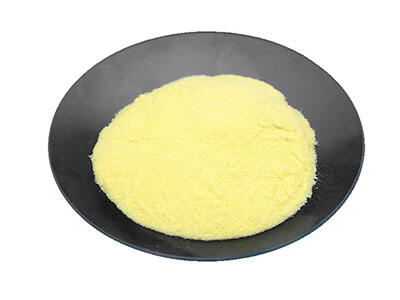The purification of water is critical in the health of the population, and the effectiveness of the technique largely depends on the coagulants used. Polyaluminium Chloride (PAC) 30% has become eminent among the numerous number of coagulants in the market owing to its effectiveness and flexibility. This paper explores the technical efficiency of PAC including its composition, coagulation action and flexibility to changes in pH in different wastewater sources.
Aluminium Content and Coagulation Mechanisms in Poly Aluminium Chloride Powders
The presence of aluminium is one of the distinguishing characteristics that contribute to the relevance of PAC 30% in the process of water purification. PAC is normally a coagulant with a greater concentration of aluminium oxide than the conventional coagulant such as aluminium sulfate. This improved concentration enables PAC to develop bigger and more concentrated flocs using lesser doses that are vital in the successful elimination of impurities and suspended particles in water.
The mechanism of PAC coagulation can be explained by the fact that the process has the ability to neutralize the electrostatic charge of particles present in the water whereby it enables the particles in the water to form flocs. PAC offers a pre-hydrolyzed state of aluminium and this implies that it is used in coagulation as soon as it is dissolved in water. This pre-hydrolyzed property means that PAC can work efficiently with a large temperature and turbidity band, hence it has a clear advantage compared to other coagulants that might need pre-treatment or conditioning to achieve maximum performance.
In addition, PAC generates a lower amount of sludge as compared to other coagulants which is beneficial as regards wastewater management. The decreased sludge production does not only lower the cost of disposing it includes limiting the environmental effect of the water purification process. Finally, the PAC has a special chemistry that results in stable and predictable coagulation outcomes and this means a high quality of purified water.
Adaptability of PAC to pH Variations in Municipal vs. Industrial Wastewater
The other major benefit of PAC is that it can be adjusted to changes in pH of various wastes hence it can be used in a broad application. The capacity of PAC to operate at a wider range of pH than the traditional coagulants does guarantee its efficiency in use regardless of whether used on municipal or industrial wastewater.
The performance of the PAC is outstanding in the context of municipal wastewater treatment because of generally mild pH changes that take place in this environment. The wastewater of a municipality usually lies within a fairly constant pH value range, usually between 6 and 8. Under this concentration, PAC shows good coagulation efficiency with considerable turbidity and content of organic matter reduction.
The industrial wastewater, however, may contain more extreme levels of pH due to the variability of industrial processes that are the source of the waste. The flexibility of PAC is especially important with some of the industrial effluents containing very acidic or alkaline environments. The fact that PAC can operate both at average acidic and alkaline conditions means that it is capable of dealing with various types of effluents, offers flexibility and constant clean up outcomes in various industries.
PAC derives its pH resilience through its basicity which is controllable to guarantee optimal performance even in adverse environments. This implies that PAC will be able to obtain the required coagulation results without having to conduct any expensive processes of pH adjustment, which would make the process of treating the water easier and minimize the operational costs.
To sum up, the technical importance of Polyaluminium Chloride 30 percent in water purification is its high level of coagulation, which is caused by its high aluminium content and specific physical features of the compound. It is a flexible option application in municipal and industrial wastewater treatment because of its pH sensitiveness in a wide range of pHs. PAC can be regarded as a pillar of the contemporary water purification techniques, having made water management processes safer and more sustainable thanks to reduced sludge production and effective coagulation facilitation in a wide range of applications. The further research and optimization of the use of PAC in the treatment of water processes are sure to support its irreplaceable role in protecting the quality of water in the future.
 EN
EN
 AR
AR BG
BG HR
HR NL
NL FI
FI FR
FR DE
DE IT
IT KO
KO NO
NO PL
PL PT
PT RU
RU ES
ES SV
SV TL
TL ID
ID LV
LV SL
SL UK
UK VI
VI SQ
SQ HU
HU MT
MT TH
TH TR
TR FA
FA MS
MS BE
BE HY
HY AZ
AZ KA
KA BN
BN CEB
CEB






